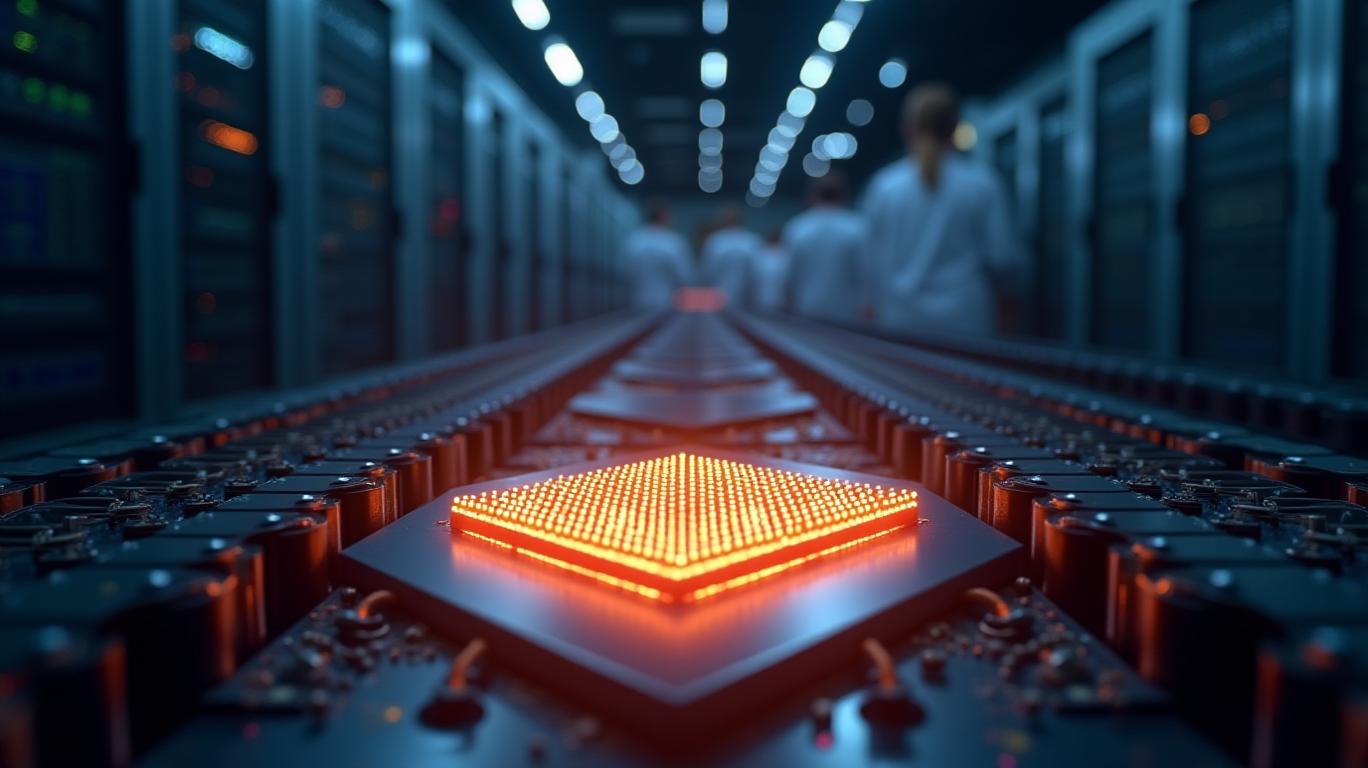NVIDIA's GaN-Powered Leap: How Navitas Collaboration Secures AI Data Center Dominance
The global AI chip market is on fire, driven by insatiable demand for next-generation data centers capable of handling ever-larger AI models. NVIDIA's recent partnership with Navitas Semiconductor isn't just an engineering milestone—it's a strategic masterstroke that cements its leadership in an industry racing to solve the power efficiency crisis. This collaboration, blending NVIDIA's compute prowess with Navitas' gallium nitride (GaN) and silicon carbide (SiC) innovations, isn't just about incremental gains. It's a quantum leap toward owning the future of AI infrastructure.
The Power Problem (And Why NVIDIA Is Solving It)
Data centers are the lifeblood of AI, but their power demands are unsustainable. Traditional 54V systems struggle to scale beyond a few hundred kilowatts, requiring massive copper busbars and inefficient conversions between AC and DC power. NVIDIA's 800V high-voltage direct current (HVDC) architecture, powered by Navitas' GaNFast and GeneSiC chips, blows this paradigm apart. By reducing copper usage by 45% and enabling 1 megawatt per rack, this partnership slashes I²R losses and eliminates 70% of maintenance costs. For a gigawatt-scale facility, every 1% efficiency gain saves millions annually—a figure that compounds as AI workloads explode.

Why This Isn't Just a Tech Win—It's a Market Monopoly
NVIDIA isn't just ahead of the curve; it's rewriting it. With an 85% share of the AI data center chip market (vs. AMD's 6% and Intel's smaller but growing slice), its dominance is undeniable. But the real edge comes from ecosystem lock-in. Over 4 million developers rely on NVIDIA's CUDA platform, and its Kyber rack-scale systems are becoming the gold standard for hyperscalers like Microsoft and Google. Navitas' contributions—like the 12kW power supply achieving 99.3% efficiency—aren't just technical feats; they're moats against competitors.
AMD's MI300X and Intel's Gaudi 3 are impressive, but they lack NVIDIA's holistic integration of power delivery and compute. AMD's focus on memory bandwidth and Intel's cost emphasis are valid strategies, but neither addresses the core problem of system-level efficiency. NVIDIA's 800V HVDC architecture isn't just a component upgrade—it's a new paradigm that turns data centers into energy-efficient powerhouses.
The Total Addressable Market (TAM) Is Exploding
The AI data center market isn't just growing—it's accelerating. By 2028, the global market for AI chips is projected to hit $140 billion, with hyperscalers and enterprise AI adoption fueling 20%+ annual growth. NVIDIA's partnership with Navitas ensures it captures the lion's share of this boom. Every percentage point of efficiency gain translates to lower capex for clients and higher margins for
The Write-In for Immediate Investment
This isn't a “wait-and-see” play. NVIDIA's first-mover advantage in 800V HVDC architecture and GaN integration creates a self-reinforcing cycle:
1. Lower Costs, Higher Demand: Cheaper, denser data centers will accelerate AI adoption, driving demand for NVIDIA GPUs.
2. Carbon Credentials: Navitas' CarbonNeutral certification positions NVIDIA as the green AI leader—a must-have for ESG-focused investors.
3. Scalability: The same GaN/SiC tech underpinning data centers can dominate electric vehicle charging and grid infrastructure, unlocking adjacent markets.
Critics will cite competition, but AMD and Intel are playing catch-up. AMD's heterogeneous chips lack NVIDIA's power stack integration, while Intel's Gaudi 3 still trails in performance-per-watt. NVIDIA's 2025 roadmap—featuring the Rubin Ultra GPU and 12kW Navitas PSUs—leaves no room for doubt: this is a company owning its future.
Final Verdict: Buy NVIDIA (NVDA) – A 20%+ Upside By 2026
The numbers are clear. NVIDIA's AI data center segment already generates $13 billion annually, and this partnership could add 20-30% to that figure by 2026 as HVDC adoption soars. With a P/E ratio still below its growth trajectory and a dividend yield that's quietly rising, this is a stock poised to outperform even as macro headwinds loom.
The AI revolution isn't just about faster chips—it's about smarter power. NVIDIA and Navitas are writing the rulebook. Investors who bet on this duo today will reap rewards for years to come.
Disclosure: The author holds no positions in the stocks mentioned.

Comments
No comments yet